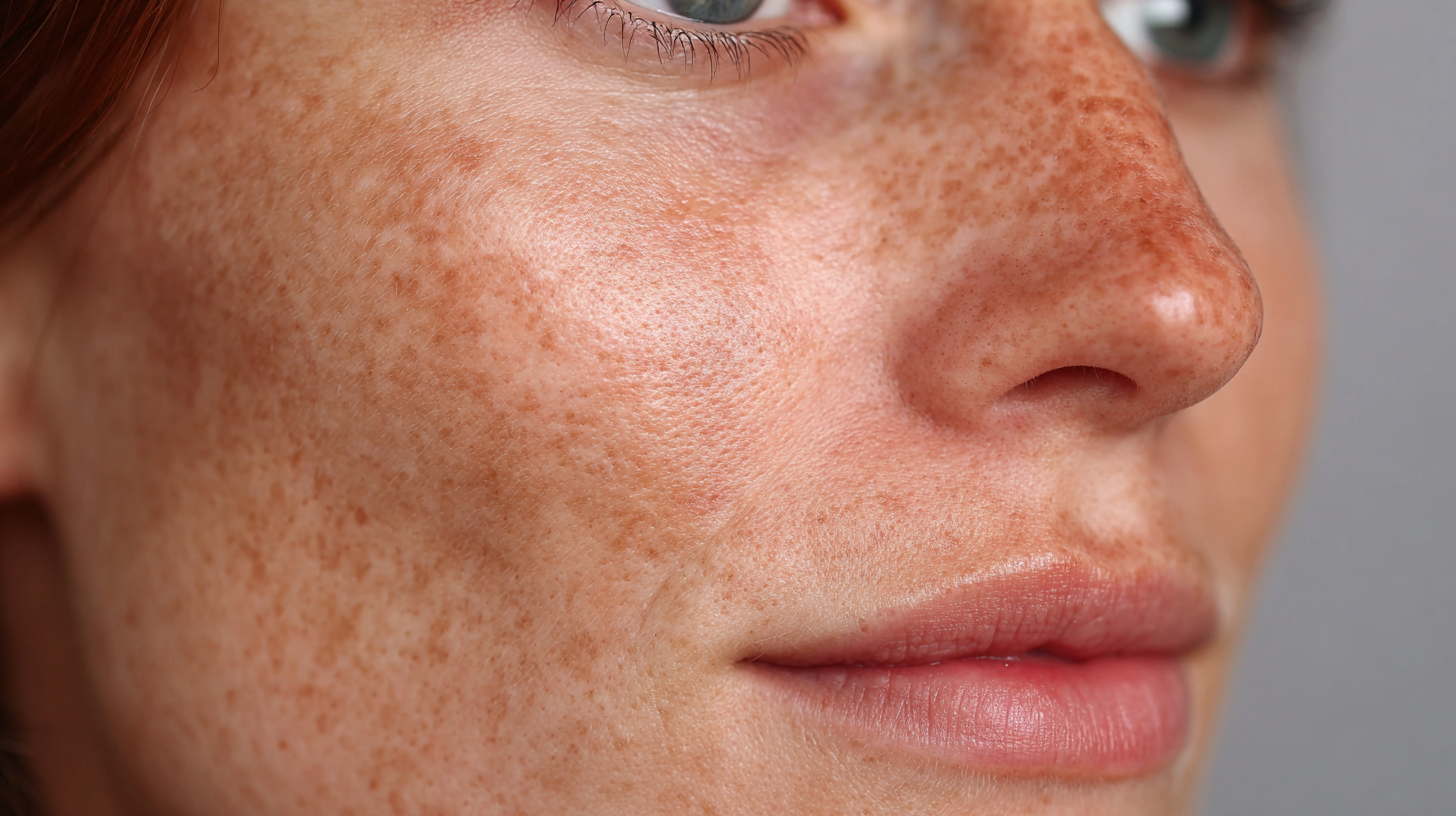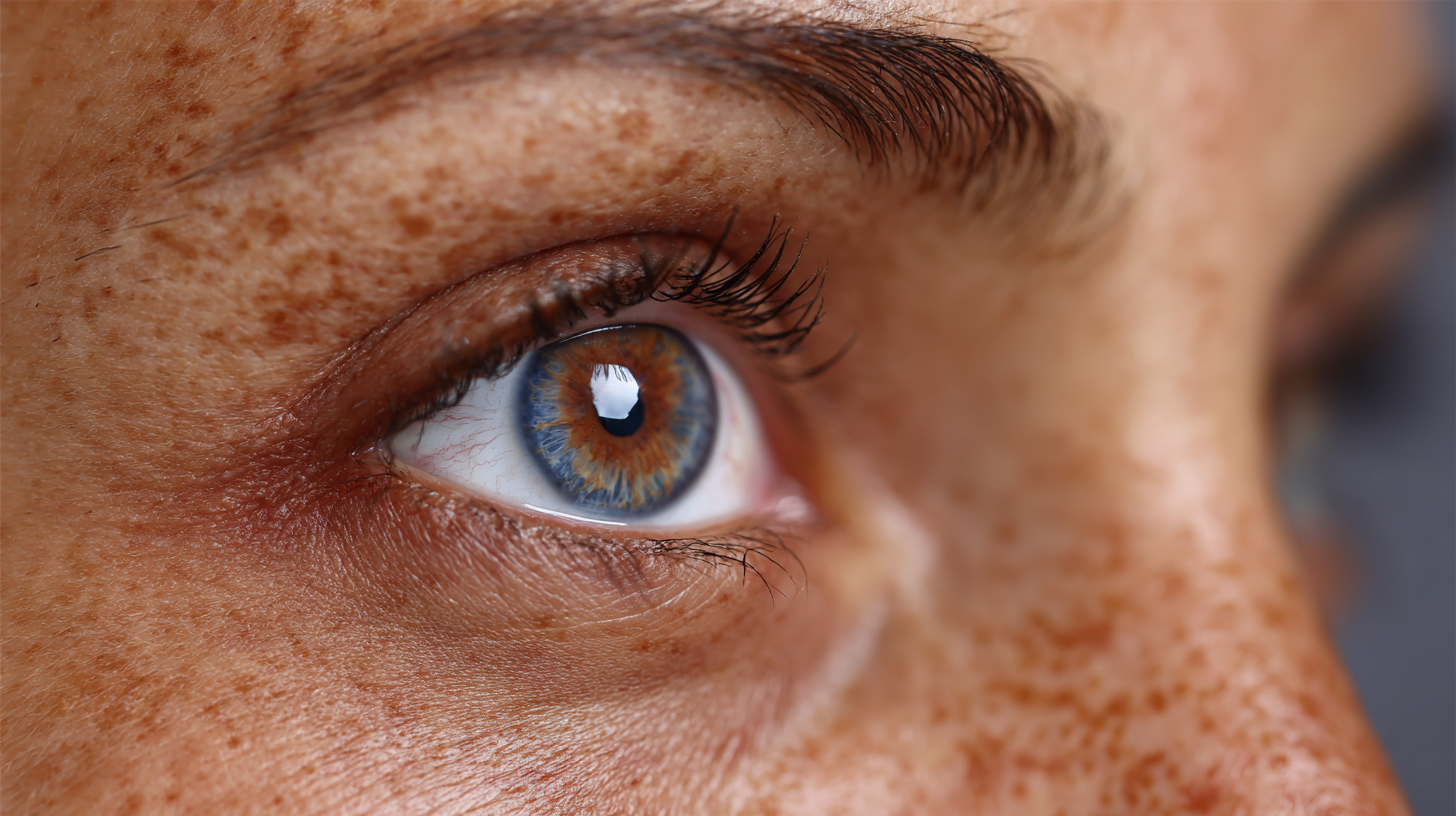How to Master Pigmentation Analysis for Optimal Skin Health
Table of Contents
- Understanding Pigmentation: Types and Their Impact on Skin Health
- The Science Behind Skin Pigmentation: Key Factors and Mechanisms
- Analyzing Pigmentation: Tools and Techniques for Accurate Assessment
- Benefits of Pigmentation Analysis: How It Enhances Skin Care Regimens
- Professional Insights: Dermatologist Recommendations for Skin Pigmentation Management
- Case Studies: Real-Life Success Stories from Pigmentation Analysis in Skincare
- FAQS
- Conclusion
- Related Posts
In the realm of skincare, understanding the nuances of Pigmentation Analysis is crucial for achieving optimal skin health. At Shanghai May Skin Information Technology Co., Ltd., a leading beauty equipment manufacturer and software service provider, we recognize the significance of thorough assessment in developing effective skincare regimens. Our expertise lies in R&D, production, and trading of innovative skin and body analyzers, as well as beauty equipment, enabling us to offer tailored OEM and ODM services.
 By mastering Pigmentation Analysis, skincare professionals can identify varying skin tones and types, addressing issues such as hyperpigmentation, sun damage, and uneven skin tone. This blog will delve into essential strategies and reasons why mastering Pigmentation Analysis is key to enhancing both the efficacy of treatments and overall client satisfaction in the beauty industry.
By mastering Pigmentation Analysis, skincare professionals can identify varying skin tones and types, addressing issues such as hyperpigmentation, sun damage, and uneven skin tone. This blog will delve into essential strategies and reasons why mastering Pigmentation Analysis is key to enhancing both the efficacy of treatments and overall client satisfaction in the beauty industry.
Understanding Pigmentation: Types and Their Impact on Skin Health
Pigmentation refers to the coloring of the skin, which results from the presence of melanin. Understanding the different types of pigmentation is crucial for maintaining optimal skin health. The two main categories of pigmentation are hyperpigmentation and hypopigmentation. Hyperpigmentation occurs when excess melanin leads to dark patches or spots on the skin, often resulting from sun exposure, hormonal changes, or certain medications. In contrast, hypopigmentation is when the skin lacks sufficient melanin, leading to lighter patches due to factors such as skin conditions, autoimmune disorders, or injuries.
The impact of these pigmentation types on skin health can be significant. Hyperpigmented areas may not only be a cosmetic concern but can also indicate underlying health issues, such as liver problems or hormonal imbalances. On the other hand, hypopigmented skin can be more susceptible to sun damage, increasing the risk of sunburn and skin cancers. Therefore, understanding these types of pigmentation allows individuals to take proactive measures, such as using appropriate sun protection, seeking dermatological advice, and adopting skincare routines tailored to their specific pigmentation needs.
Understanding Pigmentation Types and Their Impact on Skin Health
This chart illustrates the prevalence of different types of pigmentation disorders and their impact on skin health based on recent studies.
The Science Behind Skin Pigmentation: Key Factors and Mechanisms
Understanding the science behind skin pigmentation is crucial for advancing skin health. Skin pigmentation is primarily determined by melanin, a pigment produced by melanocytes in the skin. There are three types of melanin: eumelanin (brown/black), pheomelanin (yellow/red), and neuromelanin, each responsible for different skin tones. According to the American Academy of Dermatology, genetic variance accounts for about 80% of an individual’s pigmentation, with environmental factors like UV exposure playing a significant role in its expression. Furthermore, excessive UV exposure can lead to irregular pigmentation, such as hyperpigmentation and melasma, affecting approximately 10% of the population, particularly women during their reproductive years.

Several key factors contribute to the mechanisms of skin pigmentation. For instance, hormonal changes during pregnancy or hormonal therapy can trigger melasma, while certain medications can cause drug-induced pigmentation. A study published in the Journal of Investigative Dermatology highlighted that inflammatory responses and skin conditions, such as acne and eczema, could also lead to post-inflammatory hyperpigmentation. Understanding these intricate mechanisms allows practitioners to develop more effective treatments and preventative measures, empowering individuals to achieve optimal skin health based on their unique pigmentation profiles.
Analyzing Pigmentation: Tools and Techniques for Accurate Assessment
Analyzing pigmentation accurately is essential for optimal skin health management. Various tools and techniques can significantly enhance the effectiveness of pigmentation analysis, allowing for precise assessment of skin conditions. Among the most commonly used instruments are dermatoscopes, which provide a magnified view of the skin's surface, enabling practitioners to differentiate between various types of pigmentary lesions. This technique helps in identifying early signs of skin disorders, leading to timely interventions.
In addition to visual assessments, recent advancements in technology have introduced sophisticated imaging systems that analyze pigmentation patterns more deeply. These systems often employ multispectral analysis, allowing for the detection of underlying pigment variations that are not visible to the naked eye. Such tools can facilitate a better understanding of skin health and help tailor personalized treatment plans. By combining these advanced techniques with traditional methods, professionals can achieve a comprehensive view of skin pigmentation, ultimately leading to improved outcomes for patients seeking to maintain optimal skin health.
Benefits of Pigmentation Analysis: How It Enhances Skin Care Regimens
Pigmentation analysis has become a crucial component in skin care regimens, offering numerous benefits that enhance overall skin health. By examining the distribution and intensity of pigmentation, skin care professionals can identify issues such as sun damage, hyperpigmentation, and melasma. According to the American Academy of Dermatology, nearly 90 million Americans are affected by skin conditions related to pigmentation, underscoring the importance of personalized skin care strategies. Tailoring treatments based on pigmentation analysis allows for targeted interventions that can significantly improve skin tone and texture.
Incorporating pigmentation analysis into skin care routines can lead to more effective results. A 2020 study published in the Journal of Cosmetic Dermatology found that patients who underwent thorough pigmentation assessments saw an average improvement of 30% in skin texture after six months of targeted treatment. Such data highlights the efficacy of using advanced pigmentation analysis techniques, such as spectrophotometry and imaging systems, which provide objective measurements that aid in customizing products and treatment plans. By focusing on individual pigmentation profiles, skin care professionals can better address specific conditions, ultimately enhancing the overall efficacy of skin care regimens.
Professional Insights: Dermatologist Recommendations for Skin Pigmentation Management
Understanding skin pigmentation is crucial for maintaining optimal skin health, as emphasized by dermatologists who emphasize proactive management strategies. According to the American Academy of Dermatology, approximately 30% of adults experience some form of pigmentation disorder, and proper analysis and treatment can improve both skin appearance and overall confidence. Dermatologists recommend conducting comprehensive skin assessments to identify underlying issues that may contribute to irregular pigmentation, such as sun exposure, hormonal changes, and genetic predispositions.

In their professional recommendations, dermatologists often highlight the importance of tailored skincare routines. Dr. Linda Franks, a board-certified dermatologist, notes that products containing ingredients like hydroquinone and retinoids can be effective in addressing pigmentation issues when used correctly under professional guidance. Moreover, a recent study published in the Journal of Dermatological Treatment revealed that 70% of patients experienced significant improvement in pigmentation conditions after following a customized treatment plan involving both topical therapies and lifestyle modifications, such as sun protection and consistent moisturizing. By adopting a holistic approach to skin pigmentation management, individuals can achieve healthier, more radiant skin.
Case Studies: Real-Life Success Stories from Pigmentation Analysis in Skincare
In the pursuit of optimal skin health, pigmentation analysis has emerged as a pivotal tool that can dramatically influence skincare routines. By understanding the underlying causes of pigmentation issues, individuals can tailor their treatments to achieve the best outcomes. For instance, consider a case study of a young woman suffering from melasma. Through careful pigmentation analysis, her dermatologist identified the role of hormonal changes and sun exposure as significant contributors. By implementing a targeted skincare regimen, which included specialized serums and daily sun protection, she saw a remarkable improvement, with her skin tone becoming more even and radiant.
Another compelling example involves a middle-aged man dealing with age spots. Utilizing advanced pigmentation analysis techniques, skincare professionals were able to pinpoint the effects of long-term sun exposure combined with genetic predisposition. The tailored treatment plan included chemical peels and topical treatments rich in antioxidants. Over a few months, the visible signs of aging were significantly reduced, culminating in a rejuvenated appearance. These case studies illustrate not only the effectiveness of personalized skincare based on pigmentation analysis but also empower individuals to take control of their skin health, leading to transformative results.
FAQS
: Pigmentation refers to the coloring of the skin that results from the presence of melanin.
The two main types of pigmentation are hyperpigmentation and hypopigmentation.
Hyperpigmentation occurs when there is excess melanin, leading to dark patches or spots on the skin, often due to sun exposure, hormonal changes, or certain medications.
Hypopigmentation happens when the skin lacks sufficient melanin, resulting in lighter patches which can be caused by skin conditions, autoimmune disorders, or injuries.
Understanding pigmentation types is crucial as hyperpigmented areas can indicate health issues, while hypopigmented skin is more vulnerable to sun damage and skin cancers.
Commonly used tools for analyzing pigmentation include dermatoscopes and sophisticated imaging systems that utilize multispectral analysis.
A dermatoscope provides a magnified view of the skin's surface, helping practitioners differentiate between various types of pigmentary lesions and identify early signs of skin disorders.
Advanced imaging systems allow for deeper analysis of pigmentation patterns and detection of underlying pigment variations that may not be visible to the naked eye.
By understanding their specific pigmentation needs, individuals can adopt tailored skincare routines, use appropriate sun protection, and seek dermatological advice.
Technology enhances the effectiveness of pigmentation analysis, leading to more accurate assessments and better-tailored treatment plans for maintaining skin health.
Conclusion
In the pursuit of optimal skin health, mastering pigmentation analysis is crucial for understanding the diverse types of pigmentation and their impacts on skin condition. This blog delves into the scientific underpinnings of skin pigmentation, exploring key factors and mechanisms that dictate its appearance. By utilizing various tools and techniques for accurate assessment, individuals can gain insights into their unique skin needs.
The benefits of pigmentation analysis are manifold, significantly enhancing skincare regimens by providing tailored solutions and promoting healthier skin. Additionally, professional insights from dermatologists highlight effective management strategies for skin pigmentation. Through real-life case studies, this blog showcases successful applications of pigmentation analysis in skincare, illustrating its transformative potential. At Shanghai May Skin Information Technology Co., Ltd., we are committed to supporting this journey with our advanced skin analyzers and beauty equipment, empowering users to achieve their skin health goals.












